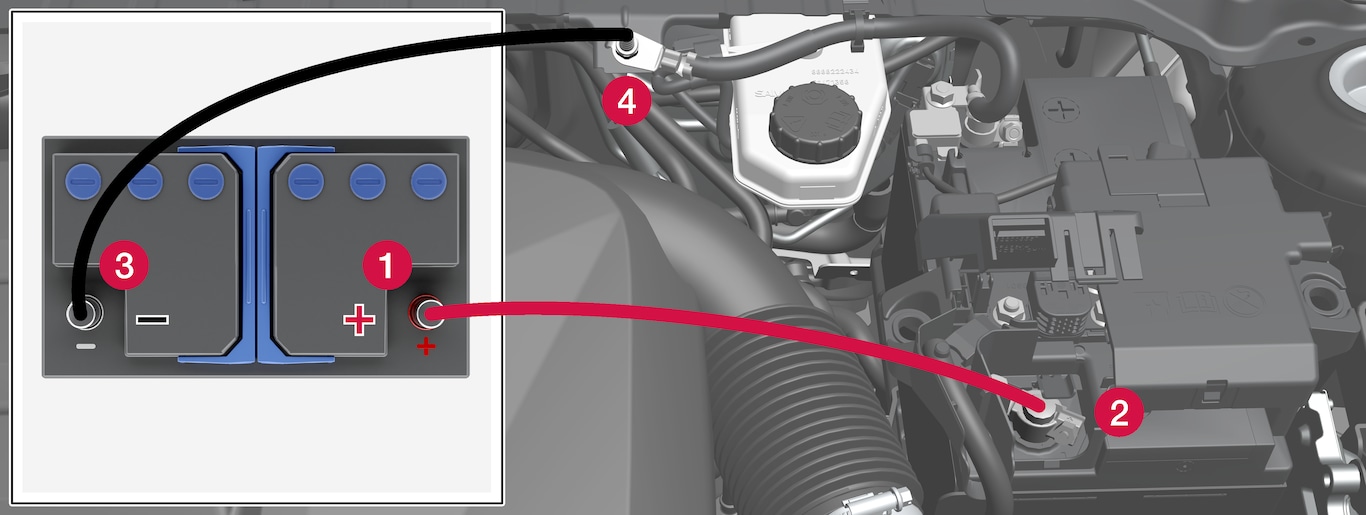Jump starting requires access to another car's 12 V battery as well as jump leads.
Important
In mild hybrid type cars, a discharged starter battery may be caused by an overloaded fuse which prevents charging. If the fuse has blown, the message 12 V battery fuse failure Service required is shown in the driver display. Volvo recommends that an authorised Volvo workshop is contacted.

When jump starting the car, the following steps are recommended to avoid short circuits or other damage:
Important
Important
Remove the jump leads in reverse order - first the black and then the red.
Make sure that neither of the black jump lead's clamps comes into contact with the car's positive charging point, the donor battery's positive terminal, or the clamp connected to the red jump lead.
Warning
Mild hybrid type cars have components that work with 48 V voltage, which can be dangerous in the event of incorrect intervention. Do not touch components that are not clearly described in the owner's manual.
- 48 V support battery must never be used for jump starting.
- External electrical equipment must not, under any circumstances, be connected to the 48 V battery.
- The 48 V battery may only be serviced and replaced by a workshop – an authorised Volvo workshop is recommended.
Warning
- The battery can generate oxyhydrogen gas, which is highly explosive. A spark can be formed if a jump lead is connected incorrectly, and this can be enough for the battery to explode.
- Do not connect the jump leads to any fuel system component or any moving part. Be careful of hot engine parts.
- The battery contains sulphuric acid, which can cause serious burns.
- If sulphuric acid comes into contact with eyes, skin or clothing, flush with large quantities of water. If acid splashes into the eyes - seek medical attention immediately.
- Never smoke near the battery.
Note
If the starter battery has such a low State Of Charge (SoC) that the car has no normal electrical functions and the engine is then jump-started with an external battery or a battery charger, the Start/stop function may continue to be activated. If the Start/stop function then auto-stops the engine shortly afterwards, there is a great risk that engine auto-start will fail because the battery has not had the time to recharge sufficiently.
If the car has been jump-started, or if there is insufficient time to charge the battery using a battery charger, the Start/stop function will be temporarily deactivated until the battery has been sufficiently recharged by the car. In an outside temperature of approx. +15 °C (approx. 60 °F), the battery needs to be charged for at least 1 hour by the car. In a lower outside temperature, the charging time may increase to 3–4 hours. The recommendation is to charge the battery if possible using an external battery charger.